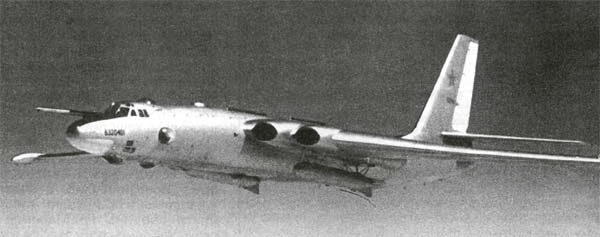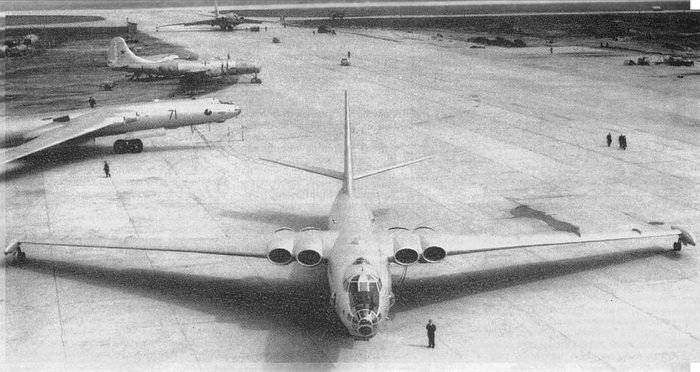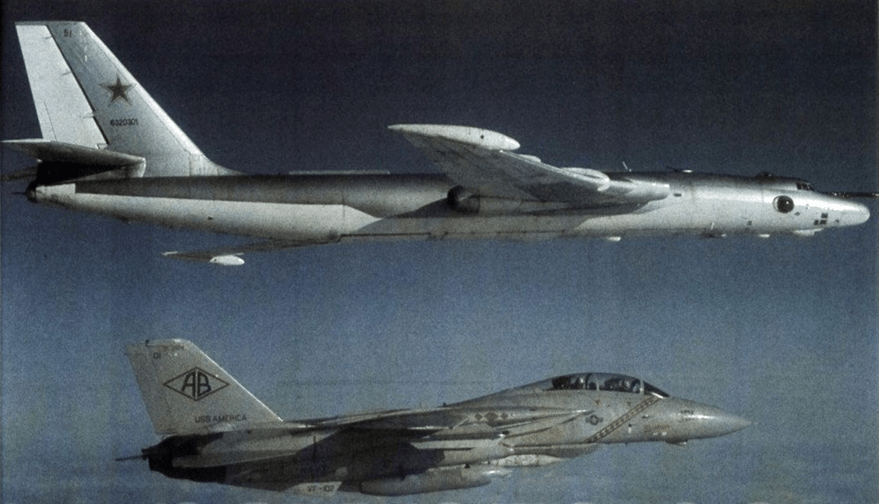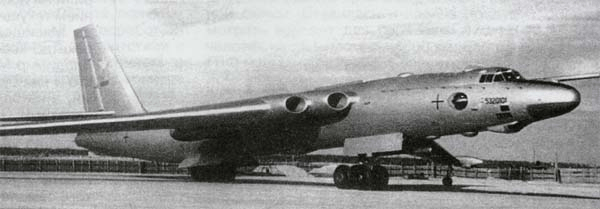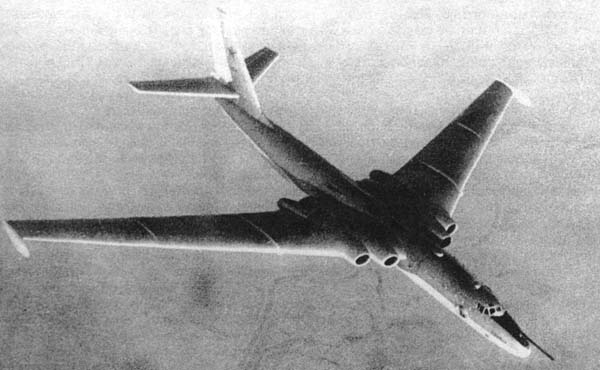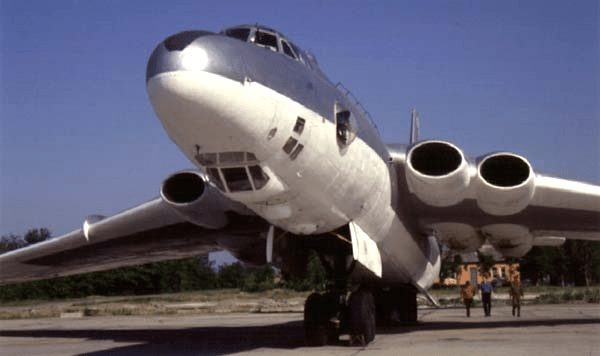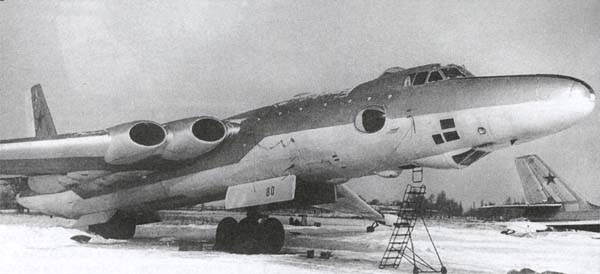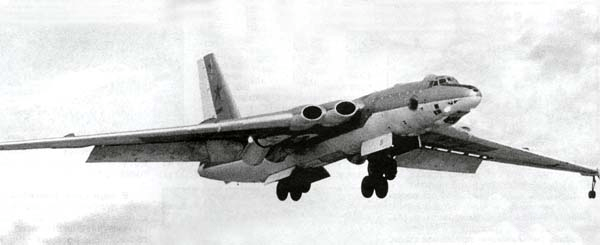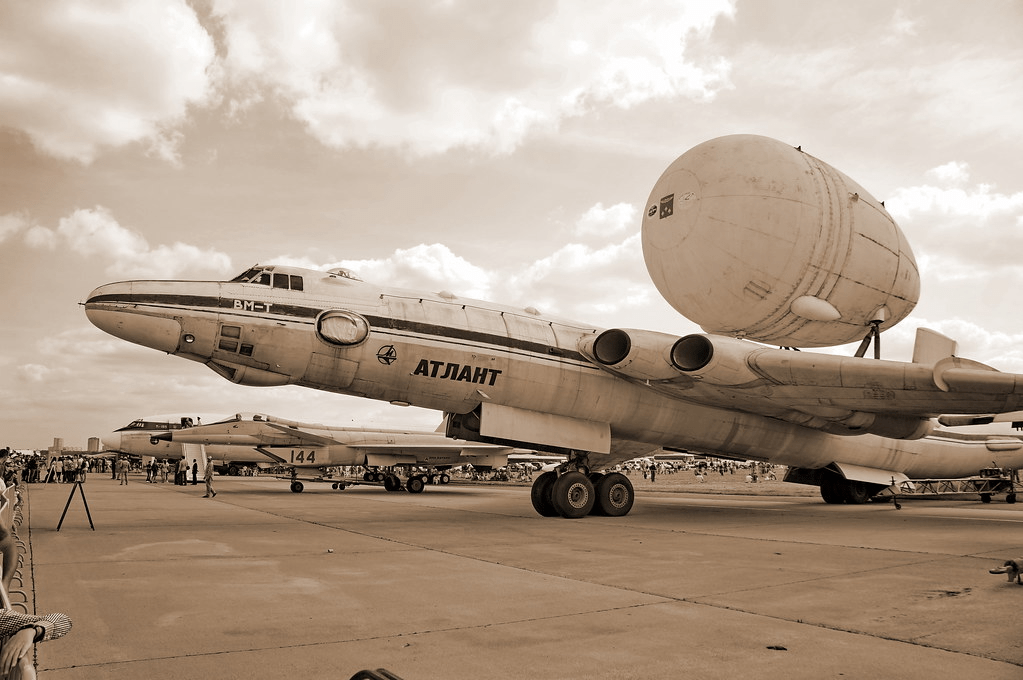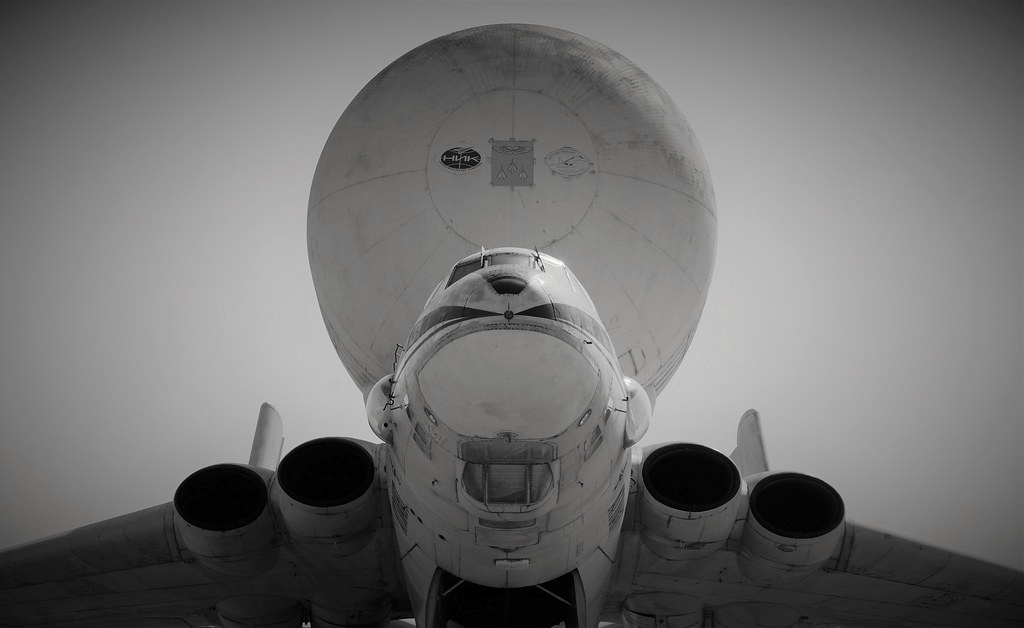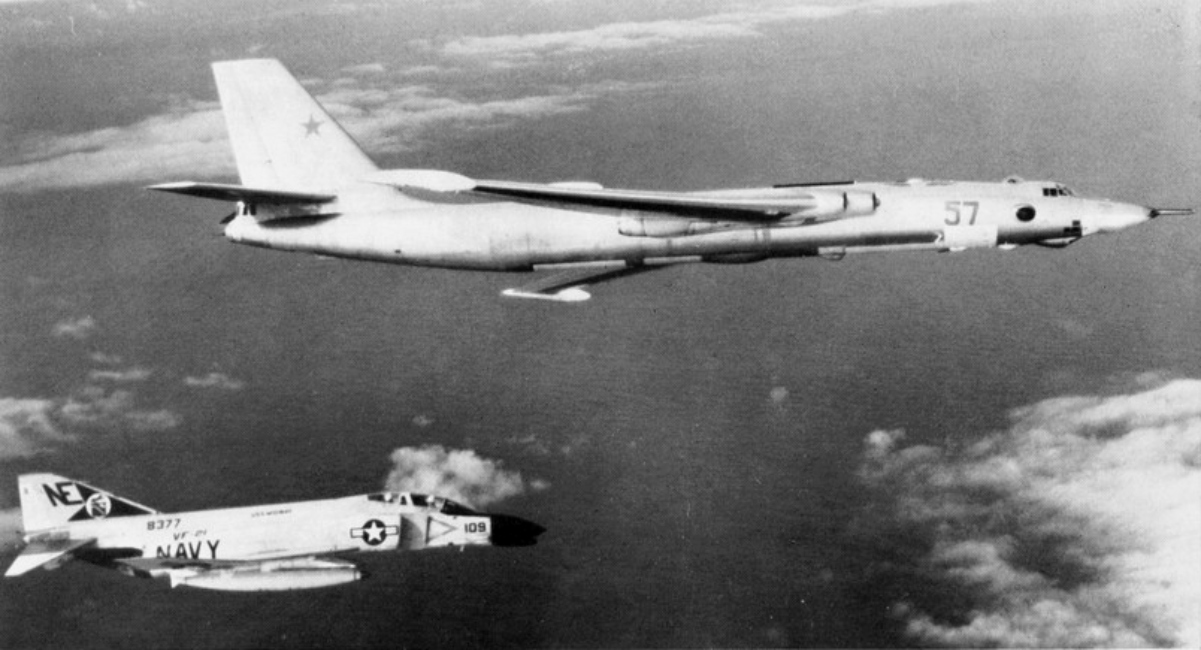Myasishchev M-4/3M Bison Soviet Bomber
Vladimir Myasishchev’s team built the M-4/3M series (NATO reporting name Bison) to give Long Range Aviation the reach to threaten North America. The first M-4 flew on 20 January 1953; service entry followed in the mid-1950s. Despite impressive payload and speed for its time, early M-4s fell short on intercontinental range, which limited their credibility as true “city-buster” bombers and shifted many airframes to reconnaissance, maritime strike, and eventually tanker duties. Total production is usually given as ~125 airframes (including prototypes). The type retired from front-line service in the early 1990s, with tankers flying until 1994.
The Bison used a 35° swept wing, four turbojets in wing roots, and a distinctive bicycle main landing gear with wingtip outriggers. Defensive gun turrets and a glazed nose on the early M-4 gave way to a solid radar nose on later 3M versions. Top speeds were high-subsonic.
Variants
| Variant | Engines | Primary Role(s) | Service / Key Years | Distinguishing Features |
|---|---|---|---|---|
| M-4 (Bison-A) | 4× Mikulin AM-3 / Klimov RD-3M | Strategic bomber → later tanker | Early-to-mid 1950s → 1960s–70s | Original bomber with glazed nose (some) and defensive turrets; range limitations; many converted to tanker M-4-2 |
| 3M (Bison-B) | Primarily 4× VD-7 (some with AM-3) | Strategic bomber → tanker | Mid-1950s → 1970s–1994 | Aerodynamic refinements, inflight-refueling probe, cleaner wing; sub-variants: 3MS-1 (AM-3), 3MN-1 (VD-7) |
| 3MD (Bison-C) | Similar to 3M (VD-7 or AM-3) | Missile carrier | Mid- to late-1950s? | “Sharp-beak” radar nose and ability to carry missiles (Rubin radar suite); limited production |
| 3M-5 | Same as 3M (VD-7) | Missile carrier (trial) | Possibly late 1950s–early 1960s | Wing-mounted provision for two AS-6 “Kingfish” (KSR-5) standoff missiles; not adopted broadly |
| M-4-2 (tanker) | AM-3 / RD-3M | Aerial tanker | Converted from late 1950s–1960s | Single-point hose-drum refueling unit, bomb-bay fuel tanks, armament removed |
| 3MS-2 / 3MN-2 | 3MS-2 with AM-3; 3MN-2 with VD-7 | Aerial tanker | 1970s–1994 (service end) | Tanker versions of 3M series, similar refueling provisions, retaining aerodynamic improvements |
| VM-T “Atlant” | Same base airframe (varied) | Heavy outsized transporter (Buran/Energia components) | Converted early 1980s; flown 1981–late 1980s | Raised & lengthened rear fuselage, twin-fin tail, reinforced wingtips, external saddle-mount for outsized loads |
- M-4 (Bison-A): Entered service mid-1950s. Originally built as bombers, but quickly repurposed as tankers due to limited range effectiveness. Conversion to M-4-2 tankers started in the late 1950s and through the 1960s.
- 3M (Bison-B): Improved version that incorporated aerodynamic refinements and better engines (VD-7), giving it better performance. Many were later converted into 3MS-2 or 3MN-2 tankers.
- Missile-carrier variants (3MD, 3M-5): Designed during the arms-race era experimentation. Neither saw widespread adoption, but reflected the evolving weaponization of strategic bombers at the time.
- Tanker versions (M-4-2, 3MS-2 / 3MN-2): Served extensively from the 1960s through 1994, supporting other Long-Range Aviation types.
- VM-T “Atlant”: A dramatic conversion in the early 1980s to carry oversized loads—namely, Energia rocket components and the Buran orbiter—on the back of the aircraft. Key in supporting the Soviet space shuttle infrastructure until An-225 took over heavy airlift duties.
Tanker service
Range shortfalls pushed the Bison family heavily into refuelling roles. Early M-4 trials validated hose-and-drogue systems, and from the late 1950s many aircraft were converted with a single-point KAZ hose-drum unit and bomb-bay tanks, armament removed. In the 1970s–80s most surviving 3M bombers became 3MS-2 or 3MN-2 tankers; these supported Bears, Blinders/Backfires, and others, and remained in use up to 1994.
VM-T “Atlant”: carrying Buran and Energia
To move large Energia rocket stages and Buran orbiter airframes from factories near Moscow to Baikonur, three 3M tankers were rebuilt as VM-T Atlants. The rear fuselage was lengthened and raised, a twin-fin tail added, wingtip gear reinforced, and external support struts installed for the piggy-back loads. First flight (unloaded) was 29 April 1981; the first loaded flight came 6 January 1982. The trio flew 150+ missions hauling Buran orbiters (and/or full-size airframes/mockups) and Energia components, directly enabling the Energia-Polyus (1987) and Energia-Buran (1988) launches. Once the An-225 arrived, it joined the heavy-haul tasks, but the VM-T had already proven the concept.
